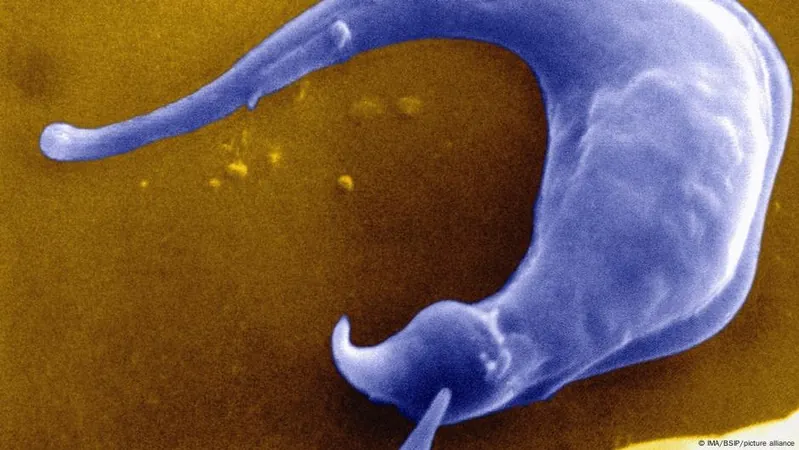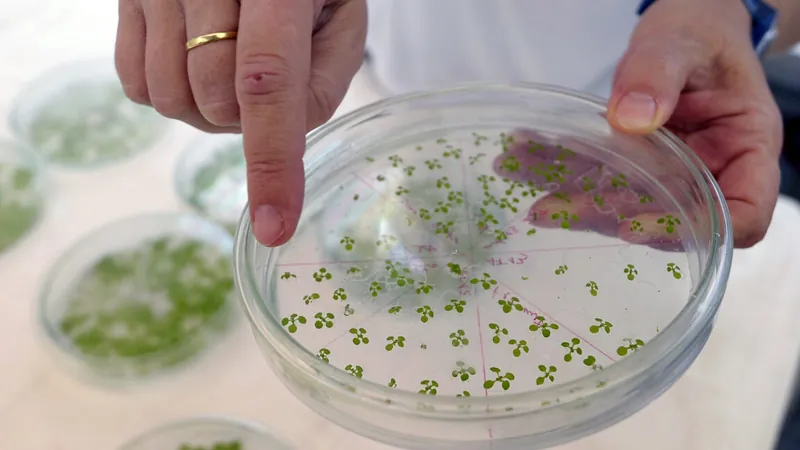
Chagas Disease Alert: The 'Kissing Bug' Invades the U.S. – What You Need to Know!
2025-09-13
Author: Ling
A Growing Concern in the U.S.
U.S. health authorities are on high alert as cases of Chagas disease—once limited to South America—are now sprouting up in at least eight states across the country. Researchers at the Centers for Disease Control and Prevention (CDC) are preparing to classify this infectious disease as endemic, meaning it could become a regular health risk in the U.S.
This change isn't just bureaucratic; it signals a significant shift in how Chagas disease will be monitored, researched, and treated moving forward.
The Kissing Bug: A Silent Menace
Chagas disease is transmitted through the Trypanosoma cruzi parasite, primarily spread by a pesky insect known as the "kissing bug." These nocturnal intruders often feast on sleeping humans, targeting vulnerable areas like the face, particularly the lips and eyelids.
However, it's not the bite that's dangerous; it's the bug's feces that poses the real threat. When contaminated droppings come into contact with any open wounds or mucous membranes (like rubbing your eyes), the parasite can enter the body. In rarer cases, infection can occur through blood transfusions, organ transplants, or from mother to child during pregnancy.
A Neglected Disease Goes Global
Originally identified by Brazilian doctor Carlos Chagas in 1907, this illness is no longer an exotic concern. With migration, blood transfusions, and international trade, Chagas disease has spread to Europe and North America. In fact, around 6,000 people are currently infected in Spain, and several hundred thousand in the U.S.
Globally, over seven million people are infected, and approximately 10,000 succumb to the disease each year, mainly in impoverished regions of Latin America. The World Health Organization (WHO) has labeled it a "neglected disease," but new data from the U.S. is drawing much-needed international attention.
What Are the Symptoms?
Chagas disease unfolds in two stages. In the initial phase, many people show no symptoms at all, while some might experience vague symptoms like fever, fatigue, or swelling near the bite site, especially noticeable as swelling of the eyelid.
These symptoms typically fade, but the parasite remains dormant in the body. After a potentially long period, serious complications may arise, such as myocarditis, heart failure, or digestive issues. Without treatment, particularly vulnerable populations like infants or those with weak immune systems face severe risks.
How Is Chagas Disease Treated?
In the acute phase, the parasite can be detected through blood tests, while antibody tests are crucial in later stages. Currently, there is no vaccine available. Treatment relies on two antiparasitic medications, Nifurtimox and Benznidazole, which are effective primarily during the acute phase.
However, these medications can come with severe side effects and lack official approval in the EU. In the U.S., they are mainly offered during inpatient care and serve only to alleviate symptoms in chronic cases.
Impact on Pets and Wildlife
Chagas disease isn't just a human concern—dogs, cats, rats, armadillos, and opossums can also be vectors. Recently, Texas and California have seen an uptick in infected pets, signaling the parasite's growing presence in the southern U.S.
Prevention Strategies
To protect against Chagas disease, experts emphasize rigorous insect protection. In affected areas, use insecticide-treated nets, seal house openings, and implement effective pest control. For pets, veterinarians suggest treatments similar to those for fleas and ticks.
Additionally, many countries are now routinely screening blood donations for the parasite to prevent transmission.
Stay informed and take precautions to safeguard yourself and your loved ones from this lurking threat!



 Brasil (PT)
Brasil (PT)
 Canada (EN)
Canada (EN)
 Chile (ES)
Chile (ES)
 Česko (CS)
Česko (CS)
 대한민국 (KO)
대한민국 (KO)
 España (ES)
España (ES)
 France (FR)
France (FR)
 Hong Kong (EN)
Hong Kong (EN)
 Italia (IT)
Italia (IT)
 日本 (JA)
日本 (JA)
 Magyarország (HU)
Magyarország (HU)
 Norge (NO)
Norge (NO)
 Polska (PL)
Polska (PL)
 Schweiz (DE)
Schweiz (DE)
 Singapore (EN)
Singapore (EN)
 Sverige (SV)
Sverige (SV)
 Suomi (FI)
Suomi (FI)
 Türkiye (TR)
Türkiye (TR)
 الإمارات العربية المتحدة (AR)
الإمارات العربية المتحدة (AR)